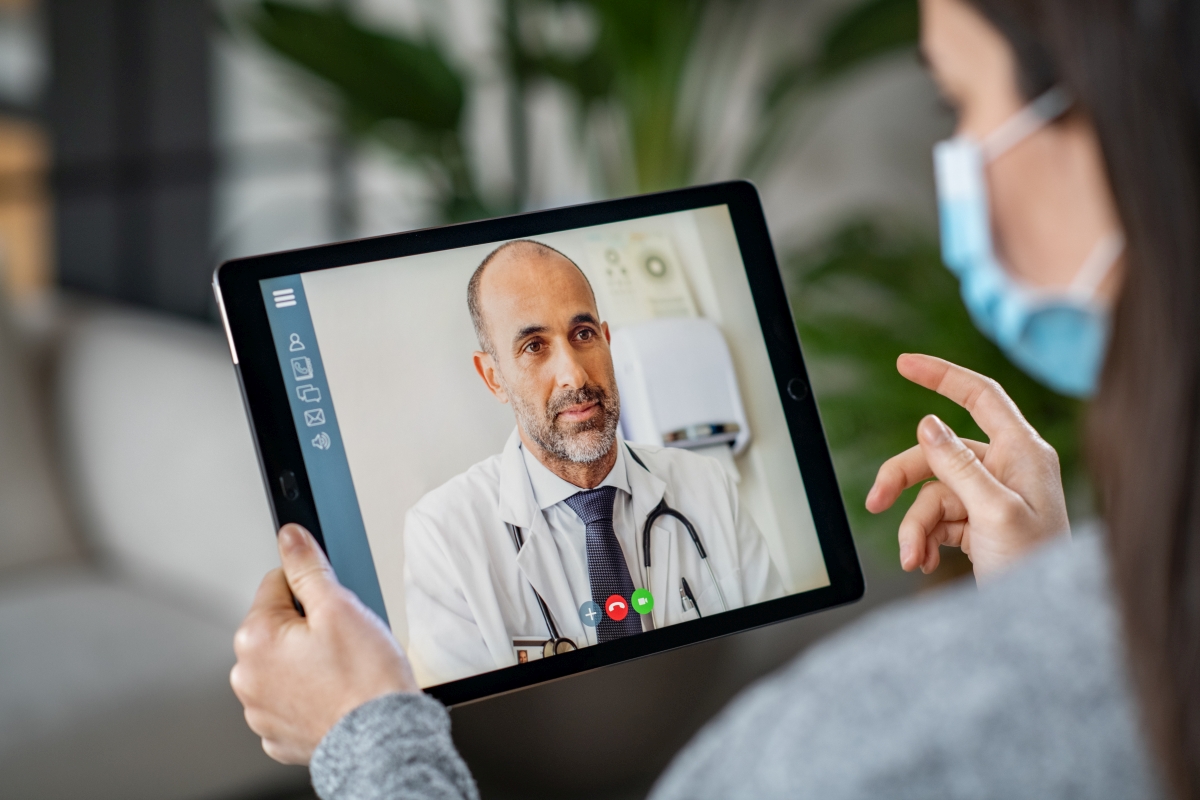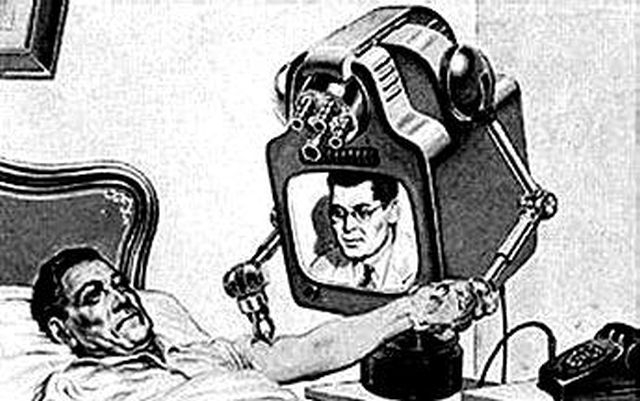Teledoctors: Accessibility to Medical Recommendations At Any Time, Anywhere
Teledoctors: Accessibility to Medical Recommendations At Any Time, Anywhere
Blog Article
Teledoctors: Linking the Void In Between Clients and Doctor
The development of teledoctors stands for a significant change in the health care landscape, supplying remedies to long-lasting ease of access concerns dealt with by clients and companies alike. By incorporating telemedicine right into standard practices, medical care systems can reach remote and underserved populaces, supplying vital medical appointments without the barriers of range and travel. This standard shift not just enhances person interaction but additionally optimizes source allotment for companies. Nonetheless, the extensive adoption of teledoctors elevates crucial questions concerning the sustainability of such practices and the effects for future health care distribution. What difficulties exist in advance in ensuring this version's effectiveness and equity?
Increase of Telemedicine

The rise of telemedicine is also sustained by the demand for cost-efficient medical care. Health care systems internationally are under pressure to reduce expenses while keeping high quality care, and telemedicine provides a viable solution. By decreasing the requirement for physical check outs, telemedicine minimizes overhead prices for medical care facilities and inevitably decreases the monetary burden on people.
In Addition, the COVID-19 pandemic served as a catalyst, increasing the adoption of telemedicine practices. Social distancing actions and the requirement to decrease direct exposure risk demanded a shift in the direction of remote examinations, triggering governing bodies to adjust and support telehealth services. This shift has not just tested telemedicine's effectiveness however also its potential to develop as a staple element of contemporary health care systems.
Benefits for Patients
As telemedicine proceeds to improve medical care distribution, people stand to gain substantially from this improvement. Mostly, telemedicine improves accessibility, permitting people in underserved or remote areas to speak with medical care service providers without the need for substantial traveling. This is specifically useful for individuals with mobility problems or those residing in rural areas where healthcare centers could be scarce. Telemedicine also uses individuals the convenience of obtaining clinical advice and therapy from the convenience of their homes, reducing the moment and cost linked with taking a trip to a medical care facility.
Furthermore, telemedicine supports connection of care by facilitating regular follow-ups and monitoring, which are critical for handling persistent problems. Patients can easily schedule consultations and gain access to health care solutions outside typical office hours, fitting their active way of livings. This adaptability results in improved patient engagement and adherence to treatment strategies, possibly causing far better wellness results.
Additionally, telemedicine can aid reduce the danger of infection transmission, a concern heightened by the COVID-19 pandemic. By reducing the requirement for in-person check outs, clients can prevent crowded waiting spaces and lower direct exposure to infectious diseases. Eventually, telemedicine equips clients by offering prompt, effective, and personalized healthcare services.
Benefits for Carriers
For doctor, telemedicine provides significant benefits that boost the effectiveness and reach of their practice. By leveraging electronic innovation, providers can expand their solutions to a more comprehensive market, consisting of those in remote or underserved locations. This not only minimizes geographical barriers but likewise optimizes client retention and acquisition by making healthcare a lot more easily accessible.
One more secret benefit is the reduction in above prices. With telemedicine, the need for physical room reduces, permitting providers to reduce real estate and functional costs. Moreover, telemedicine promotes better time management by lowering the get more demand for permitting and commuting for more adaptable scheduling. This versatility can result in raised client examinations per day, consequently improving profits potential.
Telemedicine likewise fosters a more collaborative atmosphere for doctor. teledoctors. It enables smooth sharing of client info amongst specialists, enhancing diagnostic precision and treatment end results. Furthermore, electronic platforms can incorporate with electronic health records (EHRs), boosting data accuracy and streamlining management jobs
Furthermore, telemedicine improves patient complete satisfaction, which is essential for company reputation and success. By offering prompt and hassle-free treatment, companies can improve patient commitment and involvement, even more strengthening the provider-patient connection.
Overcoming Obstacles
While telemedicine uses various advantages for health care companies, it additionally provides obstacles that need mindful consideration. Health care providers need to adhere to rigorous regulations like HIPAA to safeguard delicate details, thereby needing investment in safe and secure platforms and continuous team training. teledoctors.
An additional challenge is the electronic divide, which can impede access to telemedicine solutions. Not all people have equal accessibility to the needed innovation or web connectivity, particularly those in underserved or rural areas. This difference can aggravate existing healthcare inequalities, making it critical for providers to check out alternate solutions, such as partnerships with community organizations, to bridge this void.
Additionally, there are constraints in conducting physical exams from another location. Certain problems require in-person assessment, highlighting the demand for a crossbreed version that integrates telemedicine with standard gos to. When telemedicine is proper and ensuring seamless transitions between virtual and in-person care., providers must browse these challenges by developing methods to recognize.
Future of Health Care
The future of health care is positioned for a transformative development, driven by the quick assimilation of innovation and development. This not just enhances client comfort however also expands accessibility to health care, especially in underserved and rural locations.
Man-made knowledge (AI) and artificial intelligence are also readied to play pivotal duties. These modern technologies can analyze huge amounts of data, offering anticipating understandings right into client health and wellness, enhancing diagnostic accuracy, and individualizing treatment strategies. AI-driven devices can augment health care service providers' capabilities, causing even more informed decision-making and better patient end results.
In addition, wearable innovation and Internet of Clinical Points (IoMT) gadgets are changing individual interaction and aggressive wellness management. These gadgets make it possible for constant health and wellness surveillance, enabling early discovery of timely treatments and visit this web-site possible issues.
As these technologies continue to advance, they promise to create a much more efficient, obtainable, view publisher site and patient-centric healthcare system, ultimately connecting the void between individuals and doctor. - teledoctors
Verdict
Teledoctors are changing healthcare by substantially enhancing access and performance with remote consultations. This development supports patients in underserved areas by offering prompt clinical suggestions without calling for physical check outs, therefore improving person involvement and connection of treatment. Doctor gain from more efficient time management and enhanced cooperation chances. Despite obstacles such as regulative problems and technological obstacles, the future of medical care shows up effective and progressively inclusive as a result of the integration of telemedicine right into standard treatment designs.

As telemedicine continues to reshape healthcare distribution, clients stand to obtain considerably from this change. Mostly, telemedicine improves accessibility, enabling patients in underserved or remote areas to consult medical care carriers without the need for comprehensive travel. Telemedicine likewise uses clients the ease of receiving medical suggestions and treatment from the convenience of their homes, reducing the time and price linked with traveling to a healthcare facility.
Inevitably, telemedicine empowers individuals by giving prompt, effective, and customized medical care solutions.
Report this page